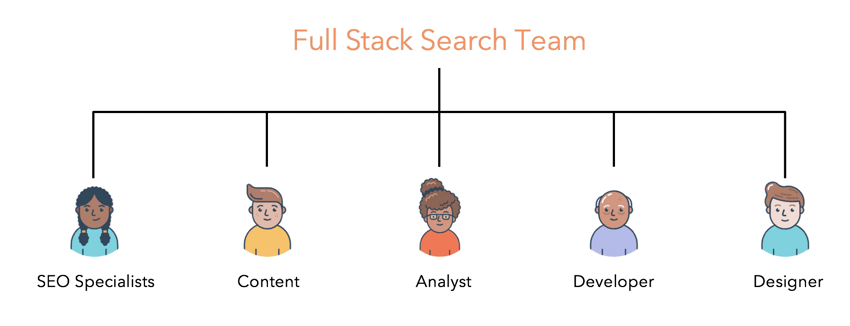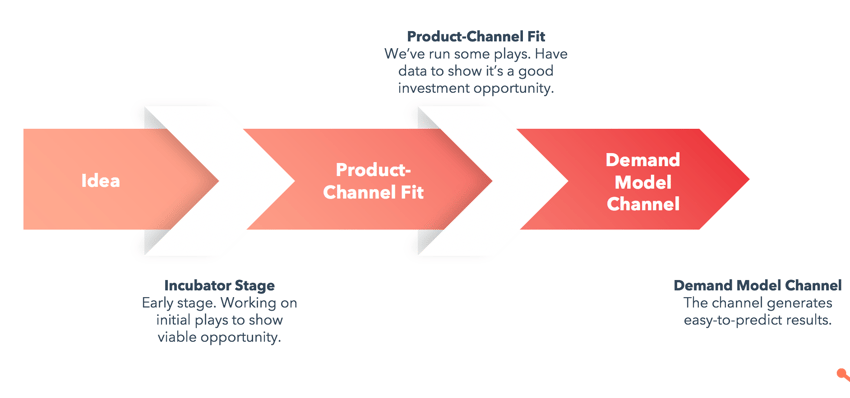What we cover in Episode 13
You know what will frustrate the people you hire more than anything else? It's when their success is dependent upon other teams, and those teams have different goals to them.
In a scale-up, your success is dependent upon teams working towards a common outcome.
In this episode, we cover how you can set up your growth team for success.
You can get the other episodes here:
- Scale-up Part 1: Hiring for Growth Roles
- Scale-up Part 3: How to Prioritize Acquisition Channels
How to Setup a Growth Team for Success
1. A single team can't achieve breakthrough growth
The people you hire want to have an impact.
Consider how you approach growth for a product, you acquire new users, onboard those users onto the value of your product and upgrade those users onto paid versions of your product.
The job of user onboarding is to get someone to discover the value of your product in the shortest amount of time. It's called the aha moment.
The job of a great manager is to do the same thing for their employees and their aha moment is discovering how much impact they can have.
In a scale-up, much of your success is the result of team collaboration. In particular for product lead companies who are going to market via freemium or free trial.

Each of the individual teams can be successful at driving growth, but it's the collaboration that will ensure you either avoid growth ceilings or break through them when they happen.
We base our team structures on their outputs, but much of our success in growth is the result of the outcomes we need.
For example, you can organize groups of people into pods to tackle the most critical outcomes for your growth.

In his article '5 Principles For Goaling Your Growth Team', John Egan talks to this very point:
"The first key ingredient for a team level goal is making sure that it is a metric that the team can directly influence and has some degree of isolation from other teams, seasonality, etc. Team level goals should be a yardstick against which the team can measure progress."
Another great article on how you should look at how the work is done (outcome) vs. traditional team structure (outputs) comes from Varun Srinivasan, the director of engineering at Coinbase:
“You still need an org chart, but if you look at reporting structure, the work that needs to get done and the people needed to get it out the door, then you'll have a more complete picture of how your organization actually works together.”
2. Organizing teams to find new growth opportunities
It can be challenging to change your growth trajectory in mature channels, but not impossible :)
But, before you get into different hacks and tactics, you need to have the right group of people aligned around the outcome you want.
For example, let's say we wanted to accelerate our growth in a mature channel like search. Before we get into our tactics, the keywords we want to target, the links we want to build, the very first thing we would do is create a full stack search team.

Every skillset needed to compete in search would exist on their team. In part 3 of this series, we're going to give you examples of the impact a full stack search team can have, so make sure you subscribe to get notified when that episode goes live.
But what if I need to find growth from brand new channels that could support future scale-up plans. Remember in part one we talked about the importance of balancing your time across existing and new channels.
One approach is to treat new growth opportunities and channels as start-ups:

Incubator Stage: Treat new ideas like a start-up. Assign a 'co-founder' to that idea. Give the idea just enough resources and budget to prove it's a viable opportunity for growth, so it's moved to the 'product-channel' fit stage.
Product-Channel Fit: The first milestone means there has been enough growth for you to determine that's it's a viable opportunity for future growth. You've seen a sustainable number of new users signup for your product, or you've generated enough new leads for it to be something worth further investment.
Demand Model Channel: The channel is now a proven source of new users or leads. In HubSpot, we predict out our next 12 months of growth using 'demand model channels' only, which means they've demonstrated some predictable level of growth.
Your goal is to move opportunities from incubator to the demand model phase so those channels can sustain your future growth.
Wait, my team are maxed out, how can I balance their time between existing and new channels?
Well, fear not, we're going to talk prioritization of channels, plus give you remarkable examples of companies who've managed to accelerate growth in both existing and new channels in part 3 of this series.
Subscribe Rate and Review
>> Stitcher
>> Google Play
>> Spotify
Follow us on Social Media
>> @Searchbrat
>> @SJTousley
Topics: Podcast, Swipefile, Leadership
